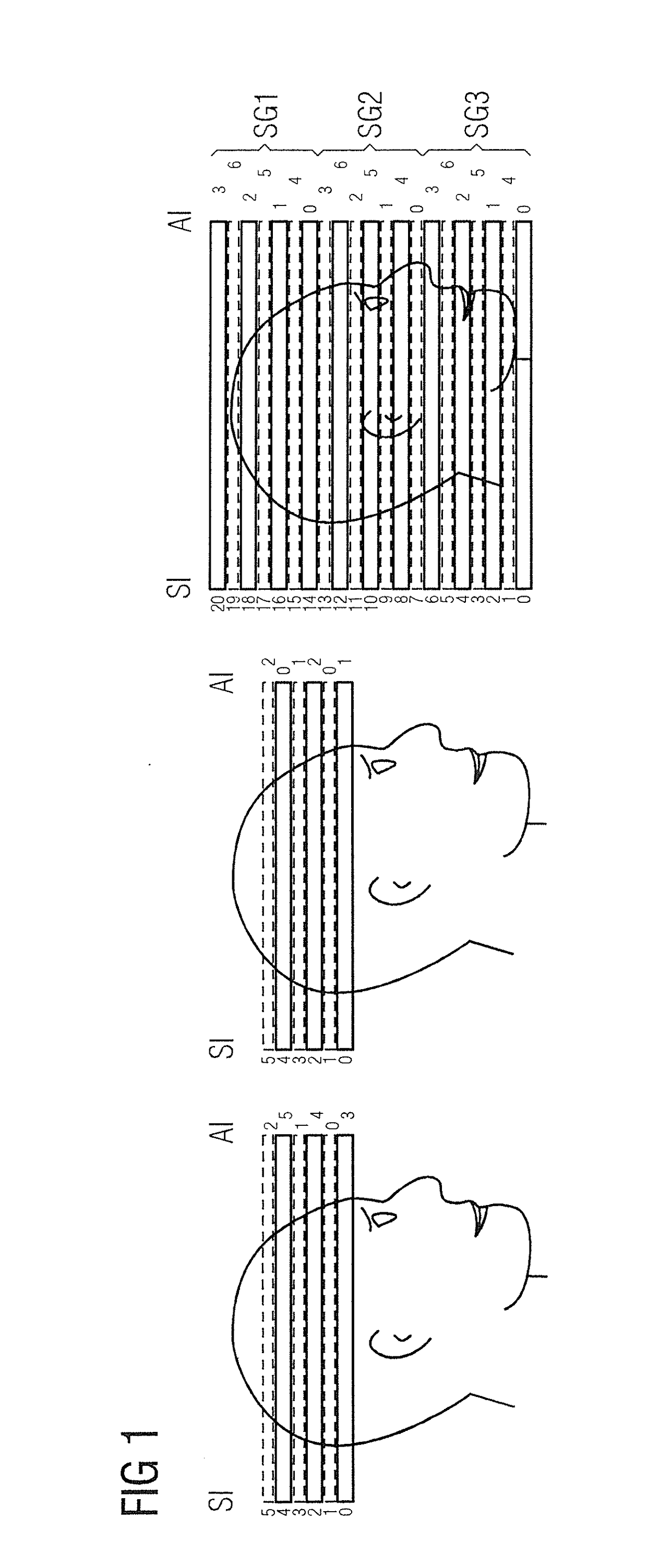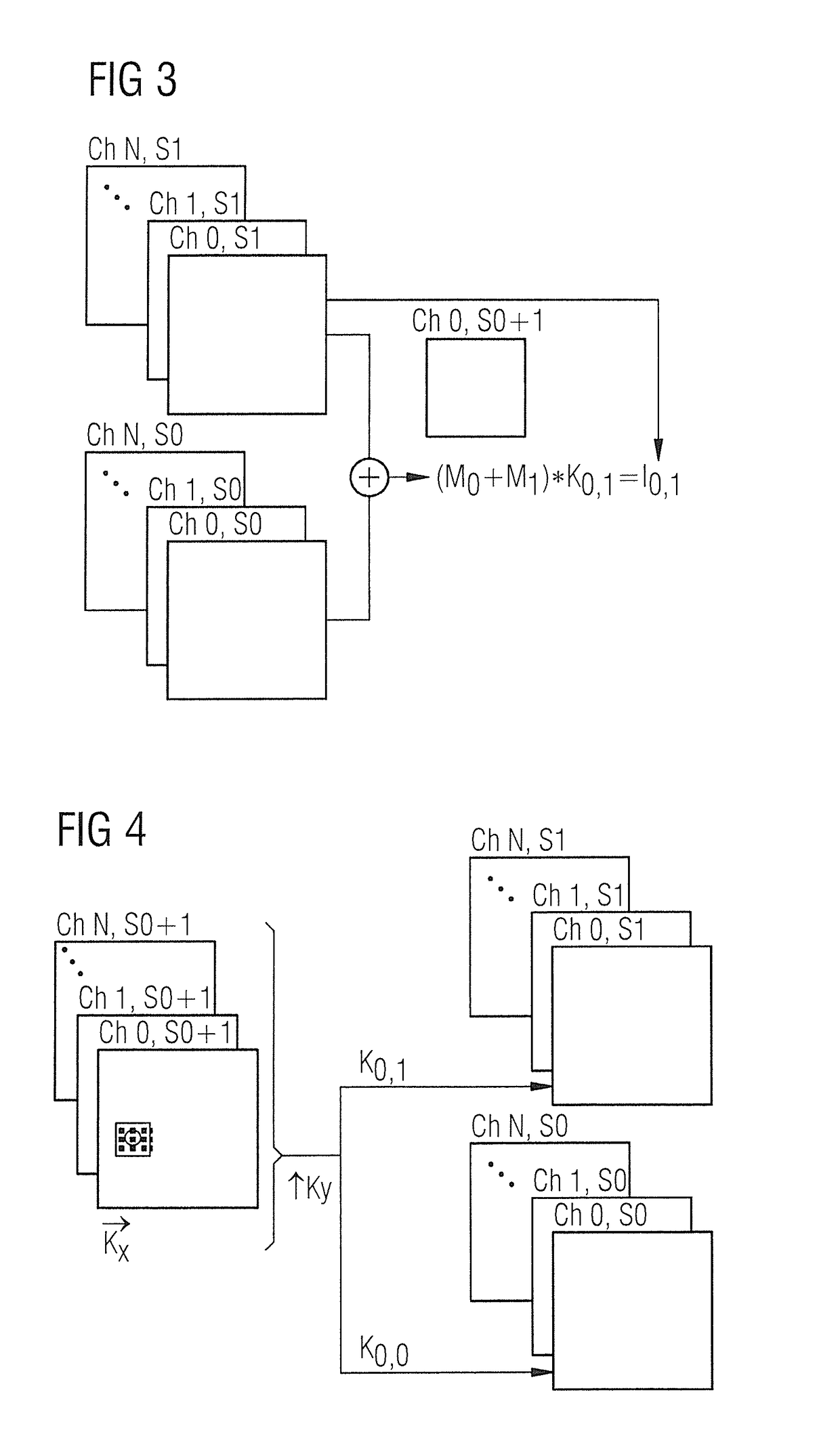Method and apparatus for actuation of a magnetic resonance scanner for the simultaneous acquisition of multiple partial volumes
- Summary
- Abstract
- Description
- Claims
- Application Information
AI Technical Summary
Benefits of technology
Problems solved by technology
Method used
Image
Examples
Embodiment Construction
[0066]In FIG. 1 shows three diagrams illustrating an acquisition scheme for simultaneous multi-slice imaging (SMS). The left diagram shows an acquisition scheme for a MR-magnetic resonance imaging method with single-slice recording. This depicts a non-accelerated measurement with 6 interleaved recordings of slices. In the case of echo-planar imaging this requires 6 slice excitations and 6 readout cycles. The left side of the left diagram is a slice index SI of a respective slice. In this case, the slice index SI goes from 0 to 5. The right side of the left diagram shows acquisition indices AI. These indicate the sequence in which each slice is excited and read-out. The left diagram shows an interleaved excitation of single slices, i.e., the slices are excited and read-out in the sequence 1, 3, 5, 0, 2, 4.
[0067]In the middle diagram, once again 6 slices are recorded but with an accelerated SMS imaging procedure with the acceleration factor 2. I.e., 2 slices are always excited and als...
PUM
 Login to View More
Login to View More Abstract
Description
Claims
Application Information
 Login to View More
Login to View More - R&D
- Intellectual Property
- Life Sciences
- Materials
- Tech Scout
- Unparalleled Data Quality
- Higher Quality Content
- 60% Fewer Hallucinations
Browse by: Latest US Patents, China's latest patents, Technical Efficacy Thesaurus, Application Domain, Technology Topic, Popular Technical Reports.
© 2025 PatSnap. All rights reserved.Legal|Privacy policy|Modern Slavery Act Transparency Statement|Sitemap|About US| Contact US: help@patsnap.com



